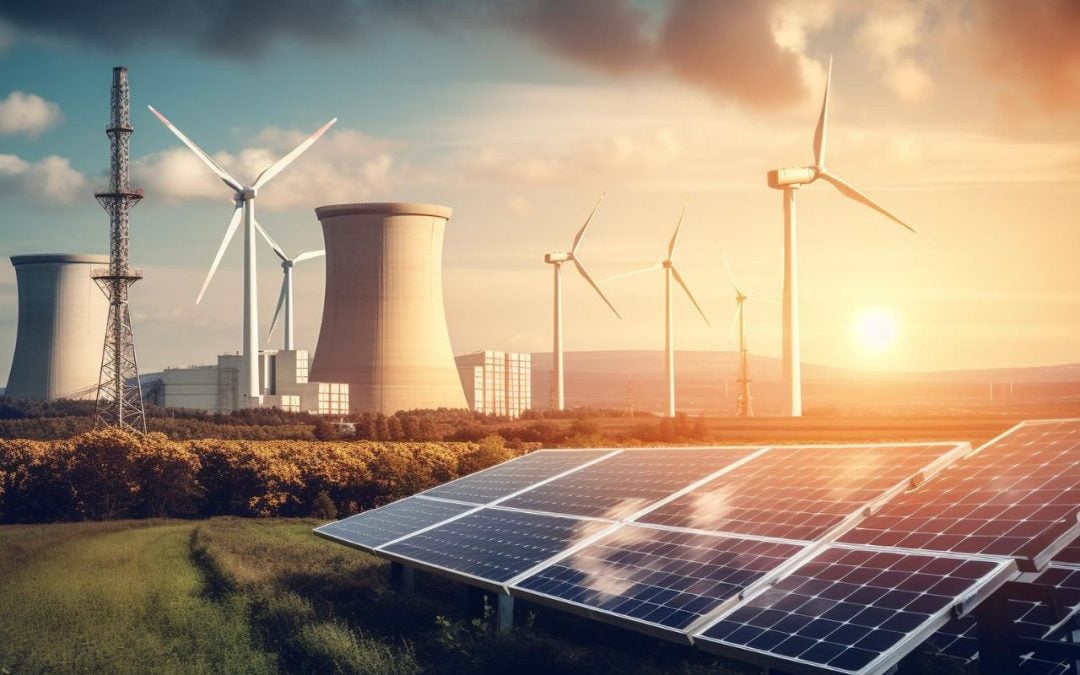Renewable energy, also known as clean energy, refers to energy sourced from natural, replenishable resources such as sunlight, wind, and geothermal heat. In contrast, non-renewable energy encompasses fossil fuels like coal, oil, and natural gas, which are finite and take millions of years to form. These non-renewable resources are not replenishable within a human timescale, making their use unsustainable in the long term.
Sources of renewable energy
Some of the Common sources of renewable energy are Solar Energy which is the most abundant of all energy; Wind Energy, which harnesses kinetic energy; Geothermal Energy, which uses thermal energy or heat from the Earth’s interior, Hydropower energy uses water moving from higher to lower elevations, Ocean Energy uses the kinetic and thermal energy of seawater, and Bioenergy which uses biomass derived from organic materials.
Indian’s Growth in Renewable Energy & Government Initiatives
As of January 2025, India has installed a renewable energy capacity of 165.20 GW. In FY24, Electricity generation from renewable energy sources stood at 216.35 Billion Units, and till December 2024 of FY25, electricity generation reached 189.48 billion Units.
These fleets are achieved with the help of government initiatives like the Green Energy Corridor, Wind-Solar Hybrid favourable policy, Major Solar parks, and Ultra Mega Solar Power Projects.
India’s electricity is expected to surge by 8 percent, fueled by economic growth, the extreme summer season, and the rise in the use of EVs and heat pumps. The Government is targeting 500 GigaWatt (GW) non-fossil-based generation of electricity by 2030.
Indian conglomerates plan to invest US$ 800 billion or Rs. 67,42,400 Crores in green Hydrogen, clean energy, semiconductors, and EVs. Whereas the government plans to invest US$ 107.89 billion or Rs. 9,12,000 Crore in power transmission Infrastructure by 2032.
Also read: Bank stock under ₹50 forms double bottom on daily chart; Check key support & resistance levels
Stock to Keep in Watch
India’s bold renewable energy goals are fueling growth for key players. Adani Green Energy and Tata Power are leading with significant investments in solar and wind farms, aligning with the nation’s clean energy vision. NTPC Green Energy, a subsidiary of NTPC, is completely focused on renewables, focusing on solar, wind, and green hydrogen.
Borosil Renewables, India’s sole solar glass producer, is set to benefit from the rising demand for solar components. Waaree Energies, a major solar panel manufacturer, is positioned to thrive as demand for domestically produced solar modules grows.
Suzlon Energy is a leading renewable energy company that is involved in the development and manufacturing of wind turbines, and NHPC, primarily engaged in the development and operations of hydroelectric power projects, is also set to benefit from India’s clean energy transition.
Where does India stand in renewable energy across the world?
As of 2024, India ranked fourth globally in wind power capacity, solar power capacity, and overall renewable energy installed capacity. The country has also outperformed the global average in setting and achieving carbon emission reduction targets, placing among the top three nations worldwide for its efforts in emission reporting and reduction.
Why renewable energy is important
Amid growing climate concerns, renewable energy has become essential for building a cleaner, more sustainable future. It helps reduce carbon emissions, lowers dependence on fossil fuels, and strengthens energy security. Additionally, it supports economic growth through innovation and job creation. Embracing renewables is both an environmental necessity and a strategic step toward long-term global stability.
Written By Abhishek Das
Disclaimer

The views and investment tips expressed by investment experts/broking houses/rating agencies on tradebrains.in are their own, and not that of the website or its management. Investing in equities poses a risk of financial losses. Investors must therefore exercise due caution while investing or trading in stocks. Dailyraven Technologies or the author are not liable for any losses caused as a result of the decision based on this article. Please consult your investment advisor before investing.





